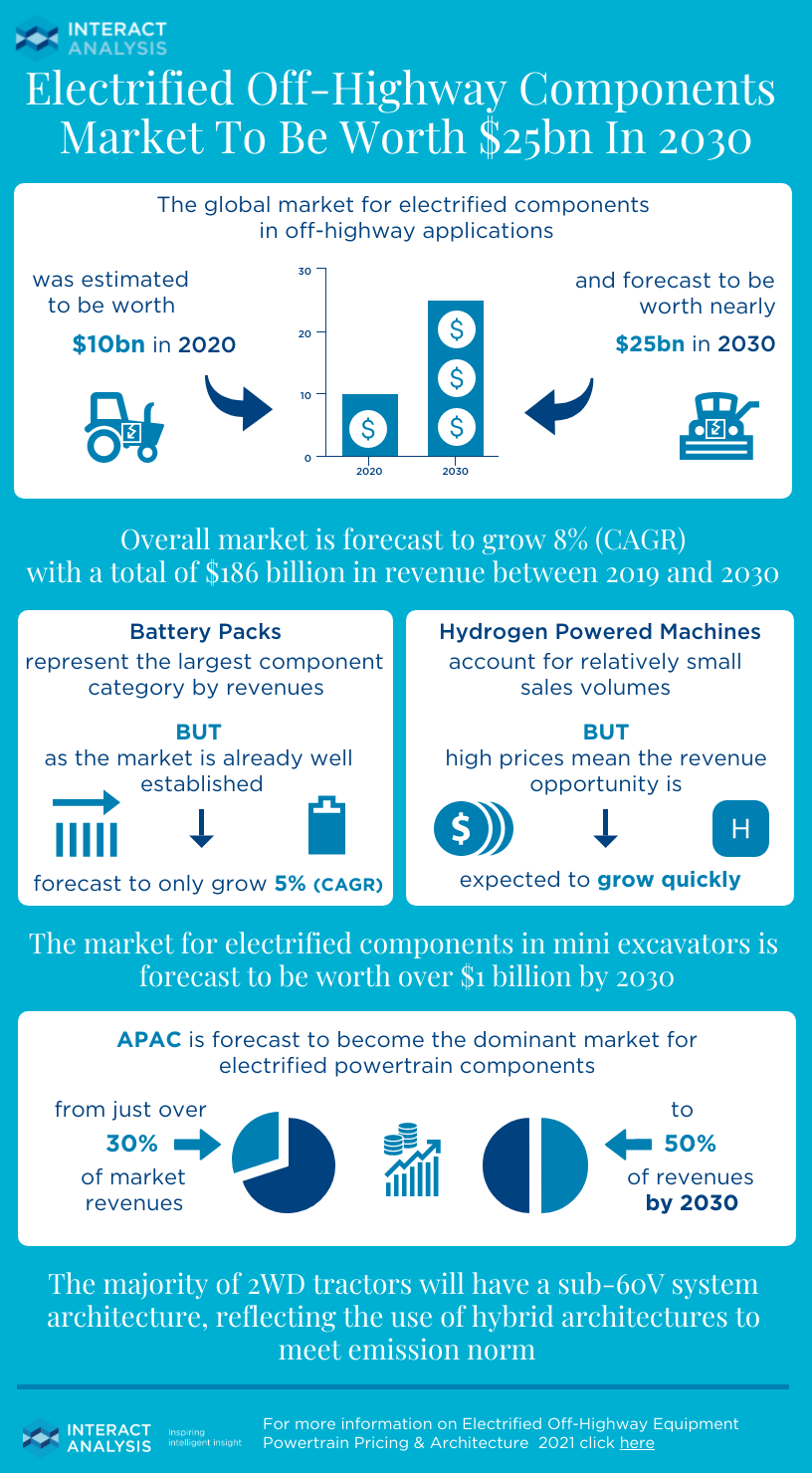商用车
2021-11-12
电动化非道路设备零部件市场价值将达250亿美元

ALASTAIR HAYFIELD
Alastair在规模化、高增长的工业和技术市场领域拥有超过15年的领导研究项目经验。作为商用车辆部门的高级研究总监,他负责电动卡车和公交车、自动驾驶和非道路设备电动化领域的前沿研究。
Interact Analysis have recently published a new market report providing insight and analysis into the electrified off-highway equipment powertrain pricing and architecture market
The below infographic demonstrates some of our key findings.
The infographic is also available to download in PDF here

Electrified Off-Highway Equipment Powertrain Pricing & Architecture Infographic – Sep 2021
– The global market for electrified components in off-highway applications was estimated to be worth $10 billion in 2020 and is forecast to be worth nearly $25 billion in 2030
– The overall market is forecast to grow at a compound annual growth rate (CAGR) of 8% with a total of $186 billion in revenue between 2019 and 2030.
– Battery packs represent the largest component category by revenues throughout the forecast period. However, unlike some other vehicle markets – e.g. passenger cars or trucks- the market is already well-established and so the growth opportunity is smaller and slower (the market is forecast to grow with a compound annual growth rate (CAGR) of only 5%),
– Hydrogen powered machines are forecast to account for relatively small sales volumes, the high price of both the fuel cell system and the tanks means that the revenue opportunity is expected to grow quickly and become sizeable over the forecast period.
– The market for electrified components in mini excavators is forecast to be worth over $1 billion by 2030
– APAC is forecast to become the dominant market for electrified powertrain components over the forecast horizon. It moves from just over 30% of market revenues to 50% of revenues by 2030. China drives much of this growth.
– The majority of 2WD tractors will have a sub-60V system architecture, reflecting the use of hybrid architectures to meet emission norms and also the voltage level needed for implement electrification.
其他商用车领域洞察

非道路领域是否已迎来高性能计算平台时代?

2024年,巴西挖掘机进口五倍于出口
